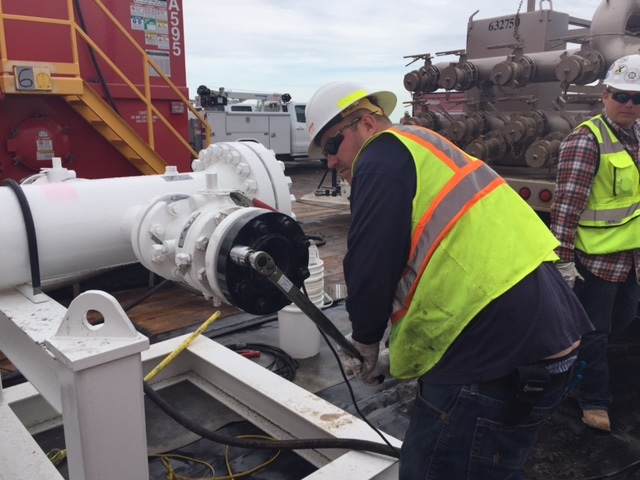
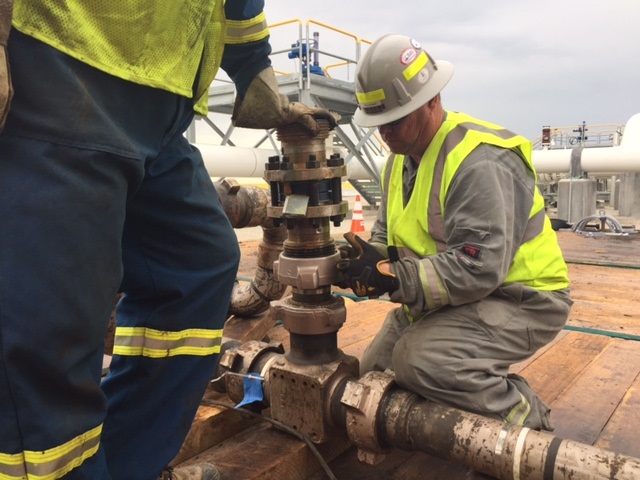
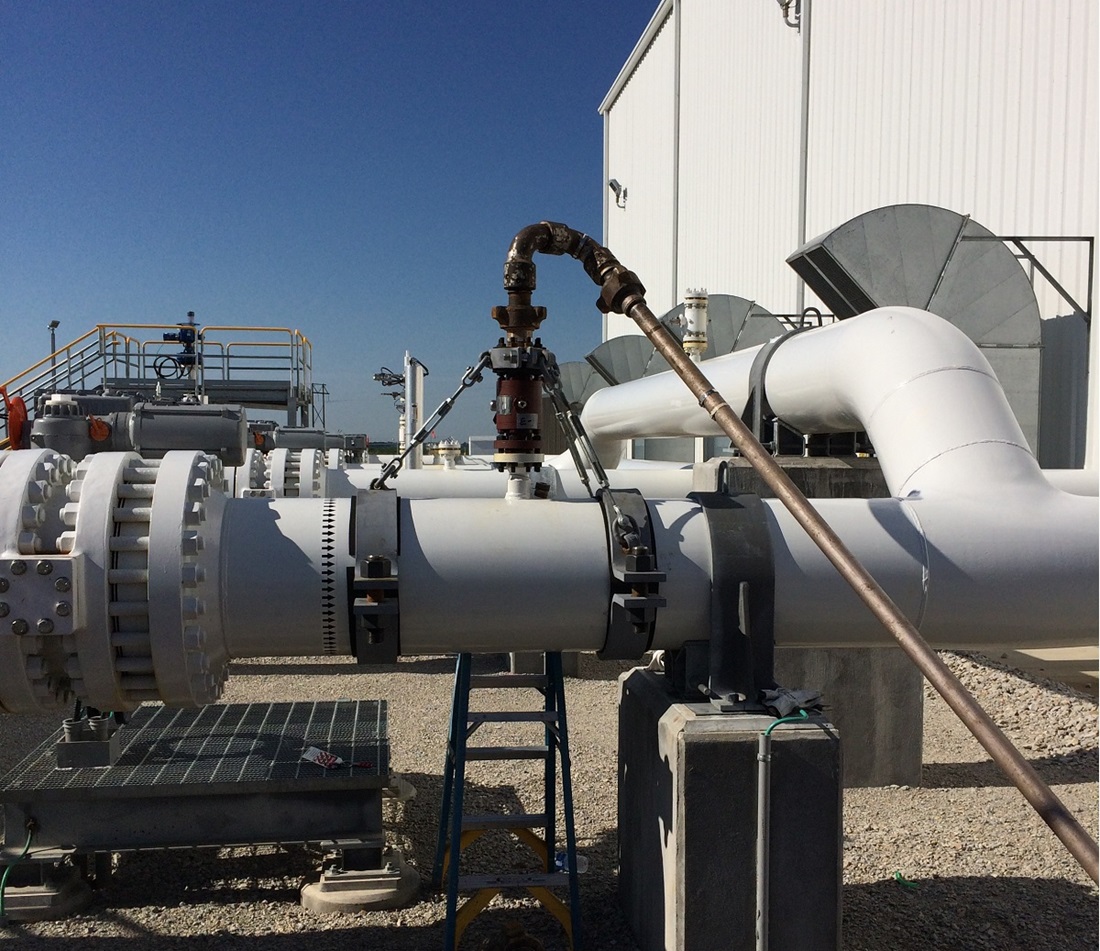
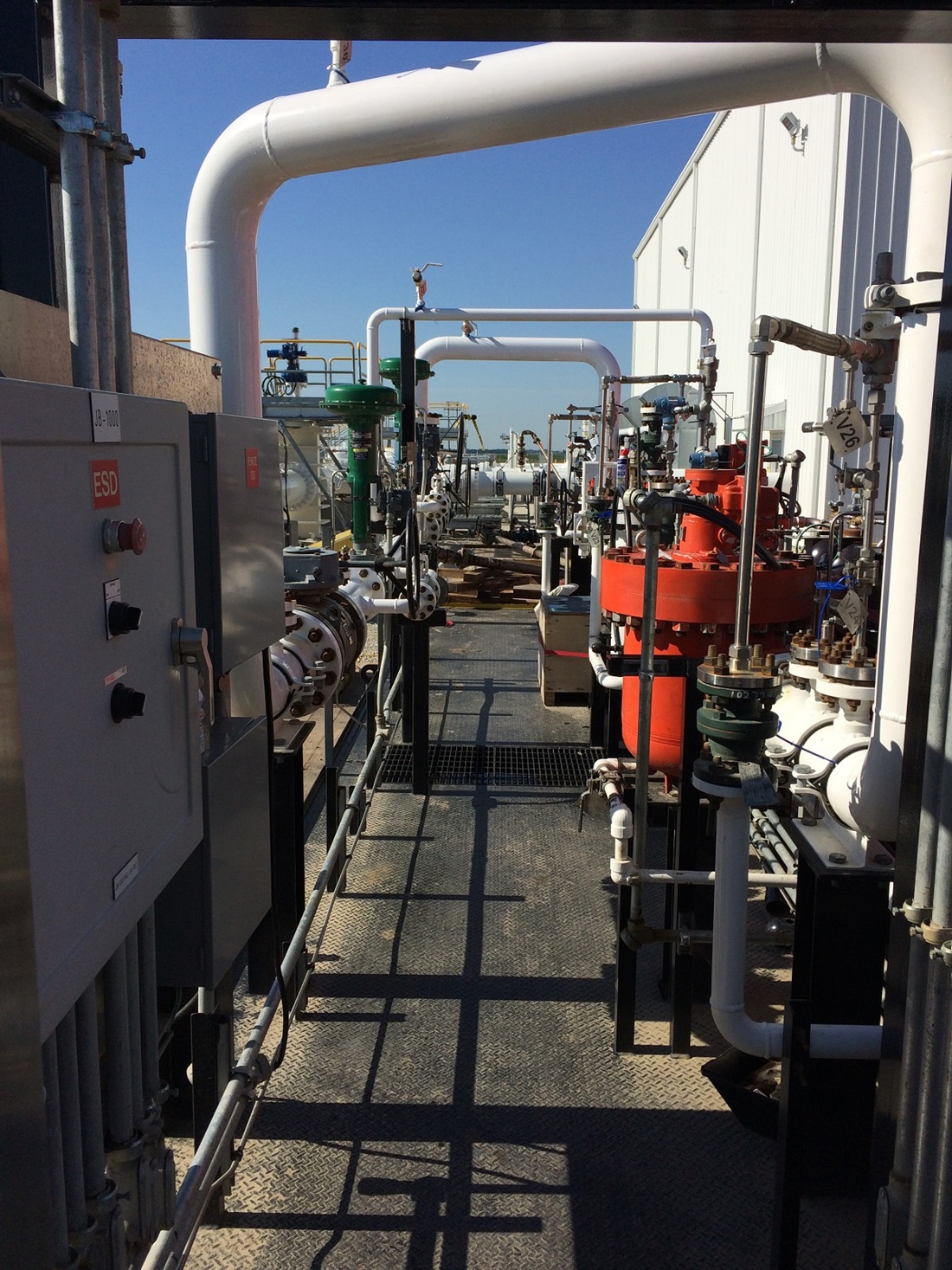
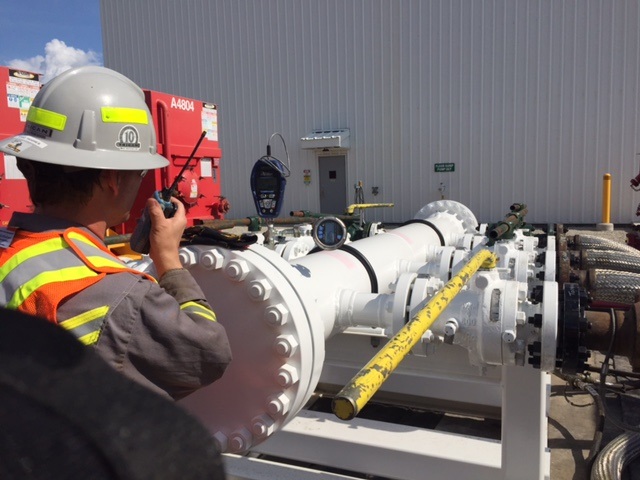
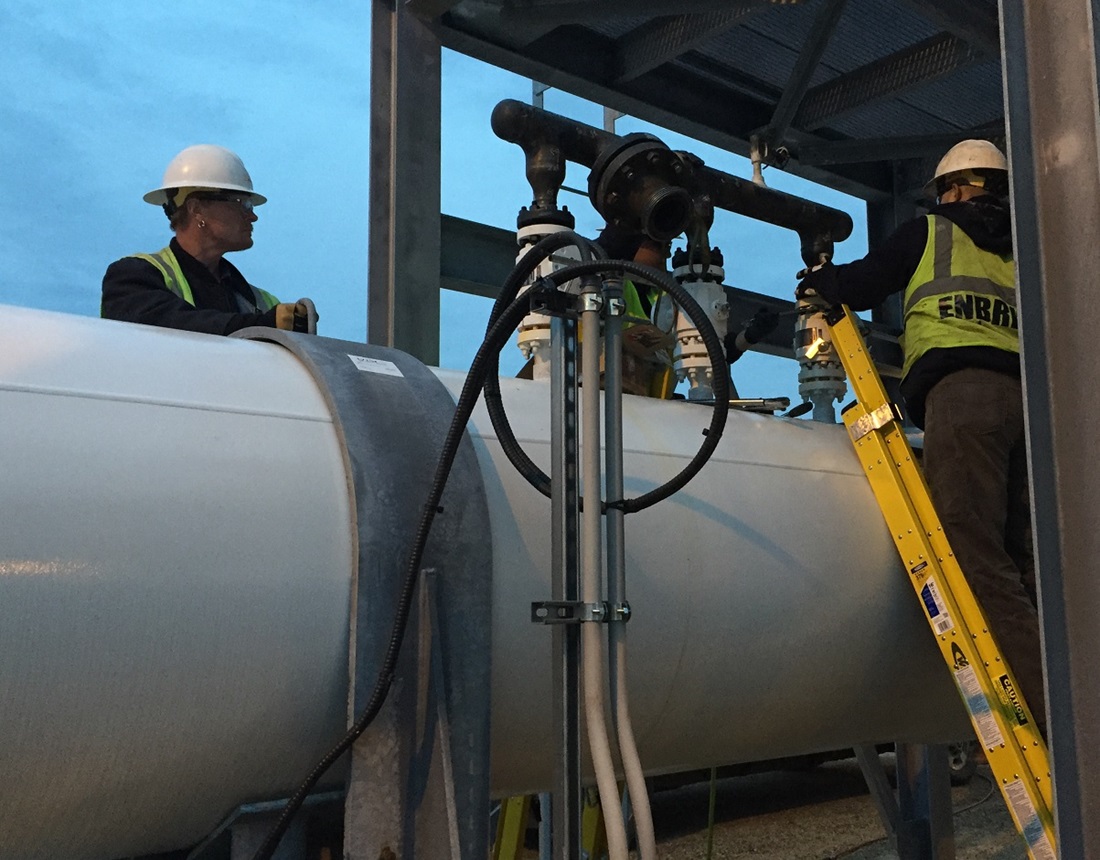
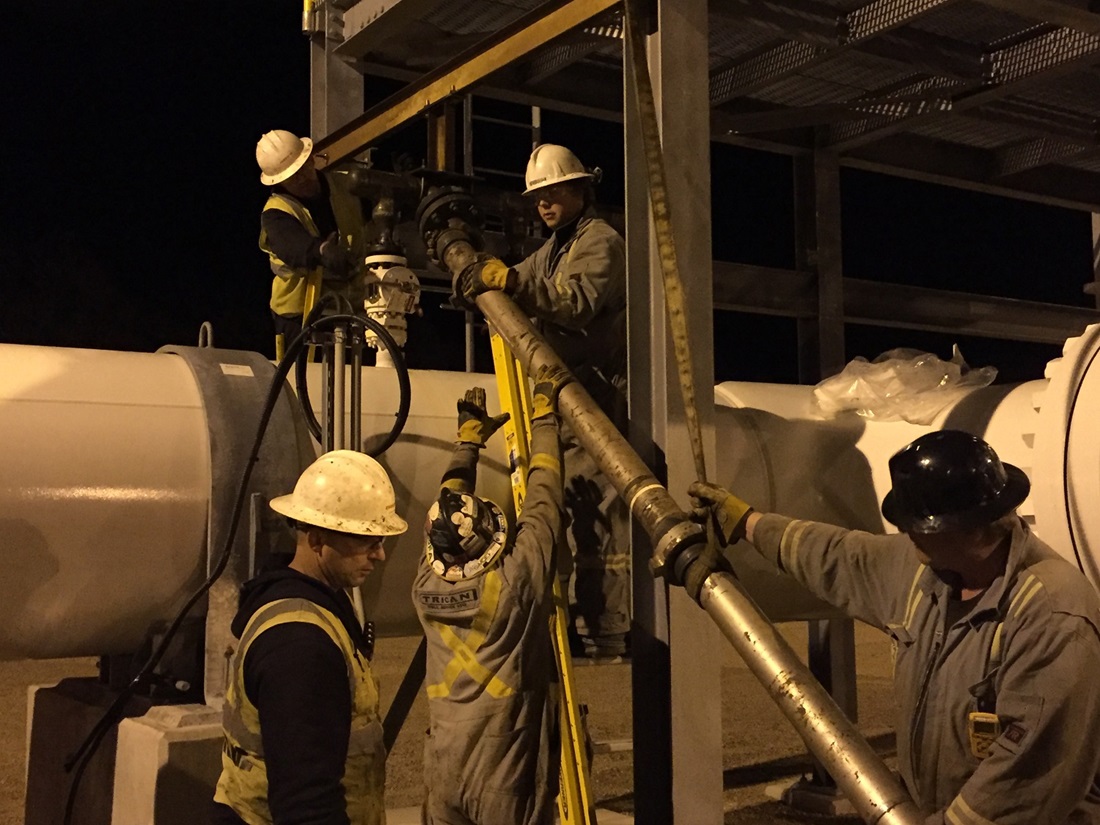
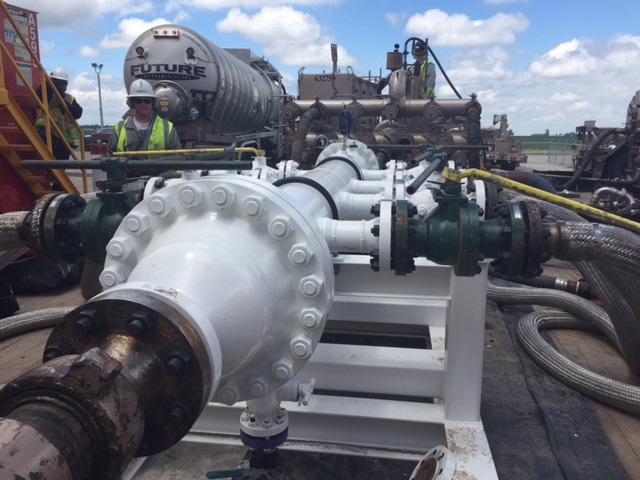
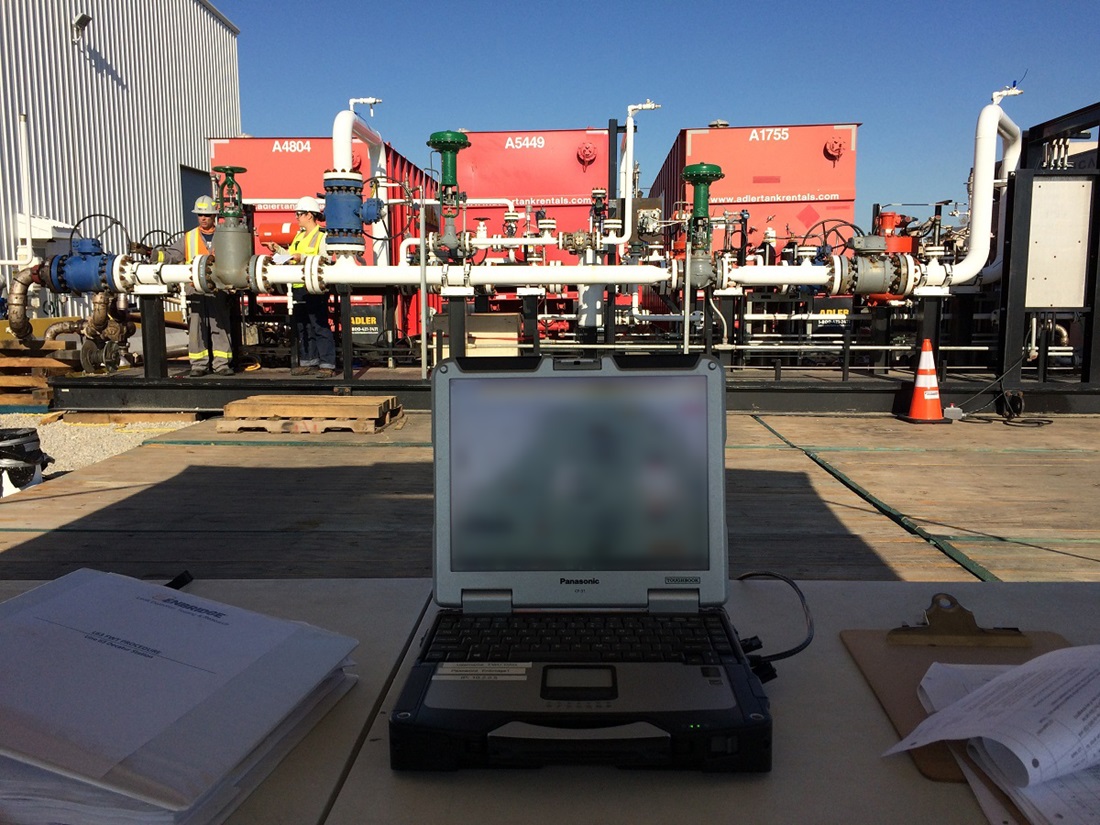
Fluid Withdrawal Testing: No. 1 of 9
The process typically involves: installing a metering skid and several large storage tanks onsite; connecting the skid to one of our pipelines; conducting controlled withdrawals, at specific rates and operating conditions, to test the sensitivity of our computerized leak detection systems; and reinjecting the oil back into the pipeline following tests.
Fluid Withdrawal Testing: No. 2 of 9
We conduct these tests under different kinds of pipeline operating conditions—startup, shutdown, shut-in, and operational at various flow rates.
Fluid Withdrawal Testing: No. 3 of 9
Fluid Withdrawal Testing: No. 4 of 9
Fluid Withdrawal Testing: No. 5 of 9
Fluid Withdrawal Testing: No. 6 of 9
Fluid Withdrawal Testing: No. 7 of 9
Fluid Withdrawal Testing: No. 8 of 9
“A leak is something you hope you never see, and generating data for our computerized leak detection systems can be difficult,” notes Camille Downs-Lanctot, who manages Enbridge’s fluid withdrawal program. “One way of doing that is to actually get out there in the field and physically withdraw product from the pipeline."








